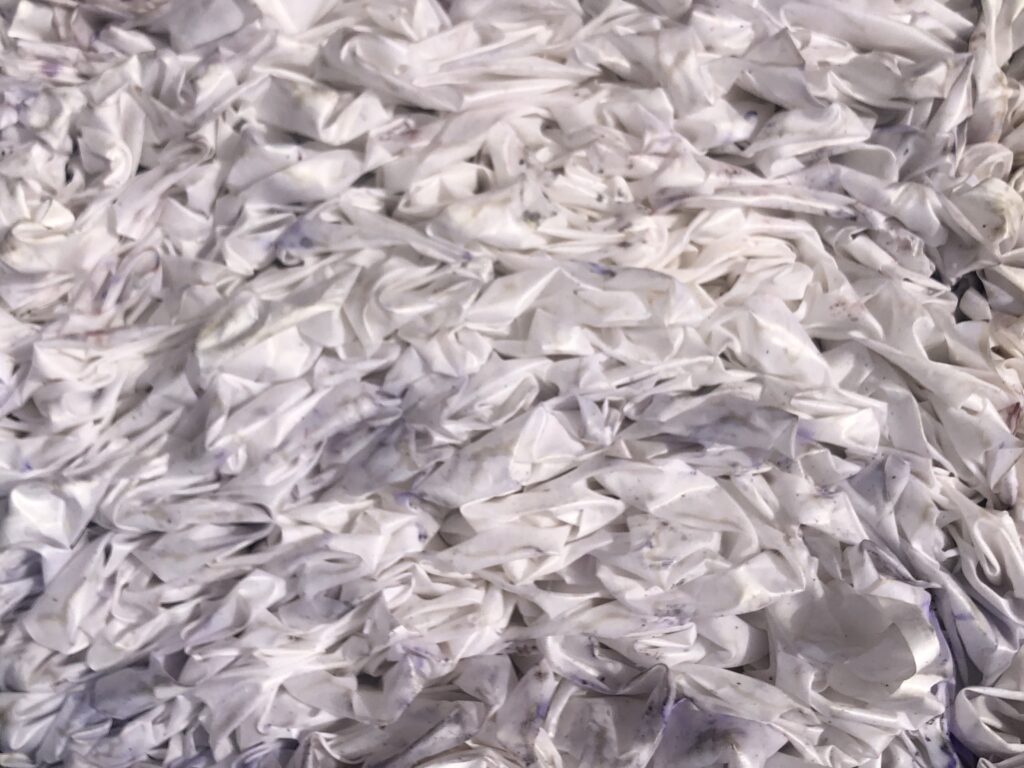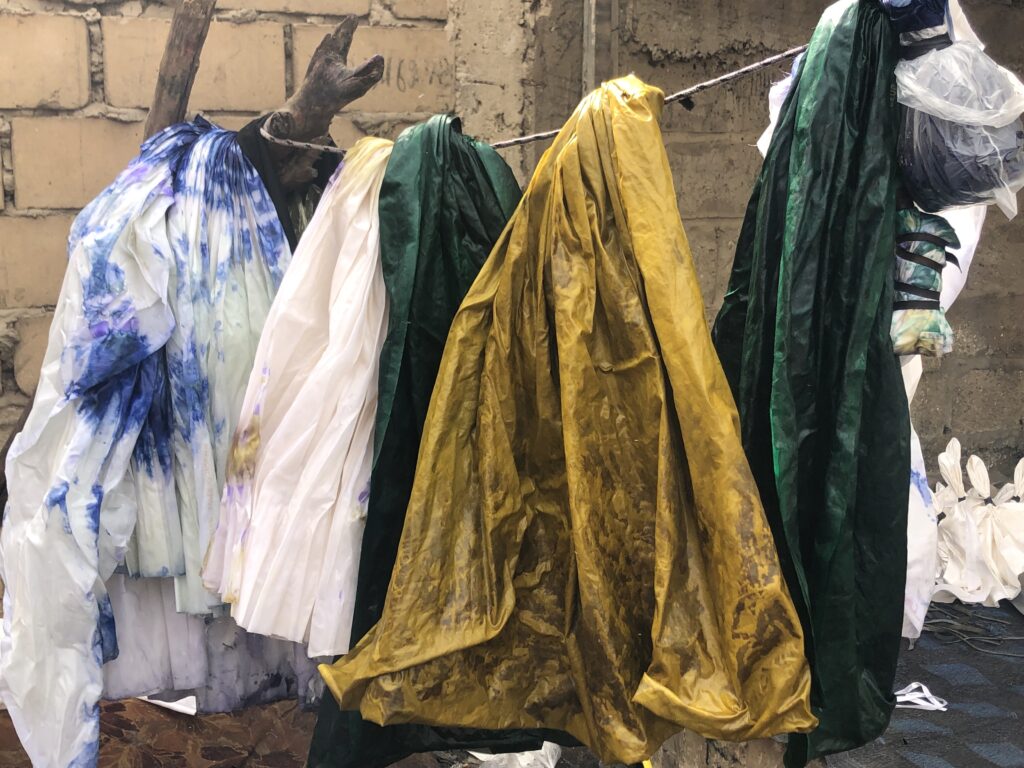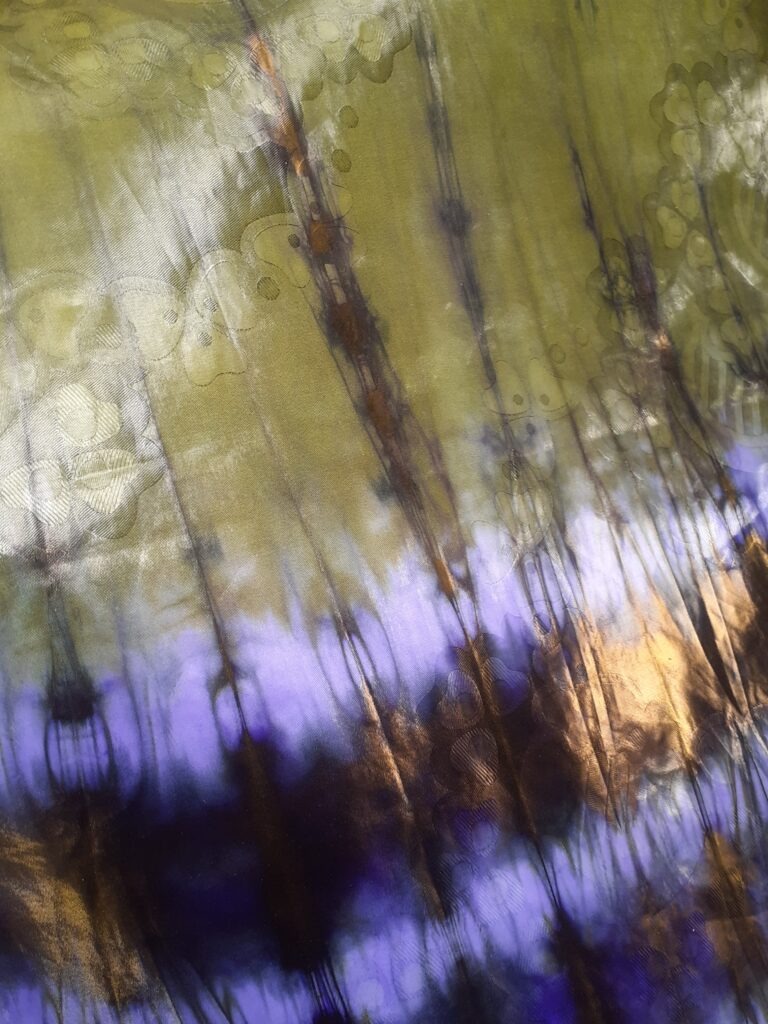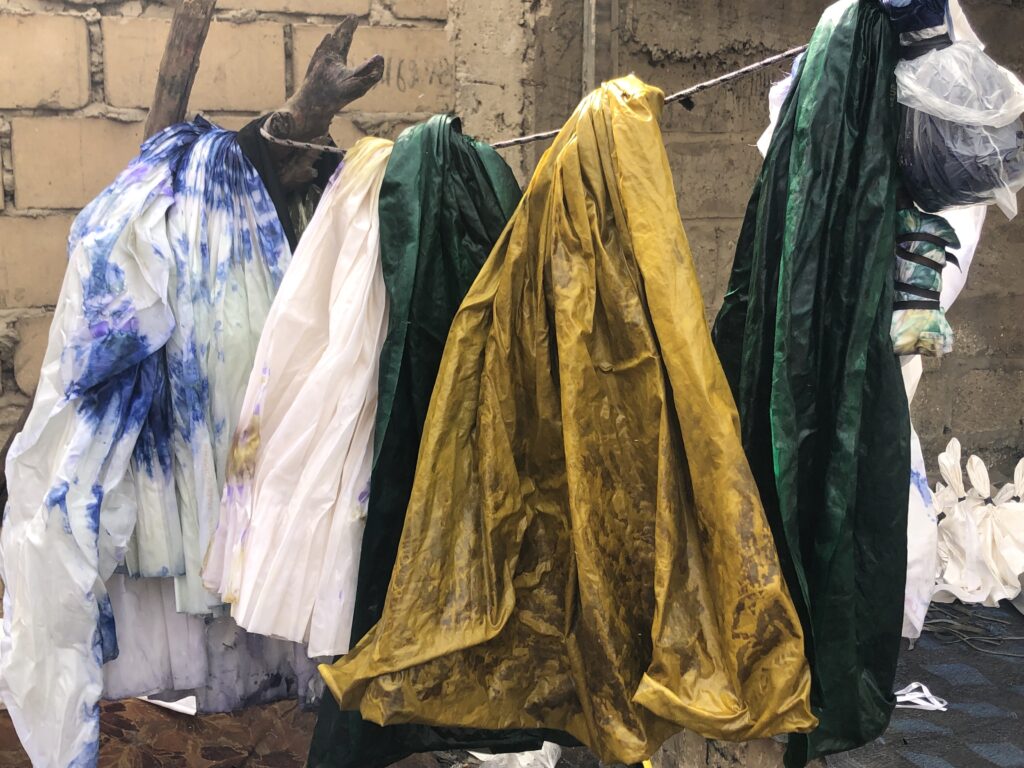Smoke and a lot of heat. It is in this atmosphere that the artisans of color work in this outdoor dyeing workshop. It is located in Medina Gounass, a district of the city of Guédiawaye, Senegal, and has been in existence for 6 years. Here, the know-how is a generational heritage. Immersion in a risky and difficult job.
In the dyeing workshop many workers are busy. Most of them work in high heat, without masks, with only gloves for protection. At the back of the workshop, a young man stirs the boiling mixture of soda, hot water and dyes, from which escapes a thick cloud of smoke and a pungent smell. Many other pots that contain the same mixture are scattered around. To make your way, you have to be vigilant and be careful not to stumble on one of them. The sand is blackened and wet from the colored mixtures thrown into it over time. A huge pit at the entrance to the workshop is used to pour the toxic mixture into it.
A meticulous manufacturing process
It is from an ordinary white fabric that the dyeing is carried out. But first, the fabric is pinched to form pleats. A resistant yarn is then wrapped around the folds of the fabric and then tied before being dyed. Coumba Konté has been a dyer for more than ten years. This profession, she learned it from her parents. The red t-shirt she wears has spots of black dye. She put on socks to protect her feet from the mixture of chemicals.
READ ALSO: Visit of the workshop “suñu fonderie forge”
She explains the process of coloring the fabric, by pouring, leaning, the blue liquid on a folded white fabric, spread out on the floor. ” I buy the bakha (dye) of red and turquoise blue color which I mix with soda and hot water. When the water boils, I then add the gum arabic. Then I pour everything on the white fabric. I successively put the red color and the blue one, while making sure to leave a little space to bring out the white color, but it’s a choice. Finally, I let the fabric dry “. After the fabric has completely dried, the knots are removed.



Credit: Bigué Ndiaye Diouf

A profession with multiple risks
Toxic products used without protection have harmful effects on the health of workers. What Coumba deplores: “ We are exposed to hot water and toxic products. It burns our skin. When I happen to be injured in the fingers, I remain without doing anything, it is so painful. Above all, I dare not touch the water because my fingers have holes in them and hurt me. »
READ ALSO: Immersion in the Metaverse
According to El Hadj Badara Diallo, also a dyer, the risk of an accident is great. He assures : ” Anything can happen, the boiling mixture sticks on stones and can spill over the feet of the exposed person. Some have even had finger problems due to the toxicity of soda. »

The weight of inflation
Fabric prices vary depending on the length you want to buy. The three meters are sold at 35 thousand, the 4 meters at 45 thousand and the 5 meters at 65 thousand CFA francs. But artisanal dyeing is suffering from the rise in the price of bazin and products used for coloring, according to Lansana Fofana, dyer. ” We don’t have a fixed place. In addition, fabric prices have increased. » The bazin wholesale price rose from 200,000 to 230,000 CFA francs. The war in Ukraine is also one of the causes of the rise in the price of imported products.


The tapping of the fabrics is carried out in Grand-Yoff, after they have been dried. Getzner, palmann or bazin riche, the uproar is made with a particular piece of wood. The fabric is tapped with a piece of wood called kouroundé, placed on another piece of wood called kouroumba. The two pieces of wood are purchased in Mali. For Moussa Yaro, fabric tapper, the latter cannot be sold without being tapped. This is to make them prettier because the aesthetic aspect is taken into account for the sale of the fabric.
